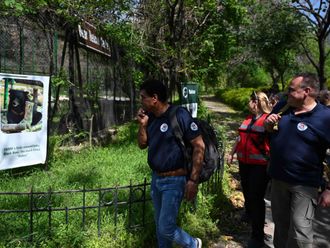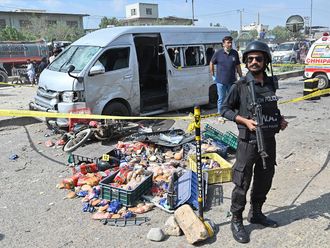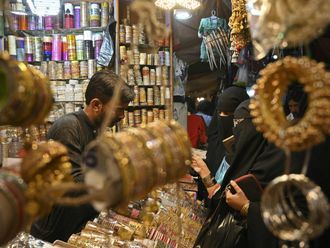WASHINGTON (Reuters)
Relations between the US and Pakistan have been on a roller-coaster for nearly 60 years
1954 US and Pakistan negotiate a defence agreement to address Washington’s fear of Soviet expansionism and Islamabad’s concerns about rival India.
1960 Pakistan allows the US to fly its spy planes from an air base in Peshawar for reconnaissance of the Soviet Union.
1970 Pakistan plays a behind-the-scenes role to open communications between its old ally China and the US. These efforts result in a secret visit of then US Secretary of State Henry Kissinger to China in 1971 and then by President Richard Nixon the following year, the first US presidential trip to China.
1971 Civil war between West and East Pakistan leads to the third Indo-Pakistan war. East Pakistan breaks away to form Bangladesh. US suspends military aid and many in Pakistan begin to see US as an unreliable ally.
1974 India conducts underground nuclear test, prompting Pakistan to begin efforts to respond with its own nuclear arms capability. Islamabad’s pursuit of atomic weapons in subsequent years strains ties with Washington.
1975 US resumes limited military aid to Pakistan.
December 1979 The Soviet Union invades Afghanistan. The US begins to view Pakistan as a front-line state in the effort to stop Soviet expansionism.
September 1981 President Ronald Reagan’s administration negotiates a $3.2 billion (Dh11.7 billion) economic and military aid package with Islamabad. Pakistan becomes the main route for arms and supplies for the Afghan resistance.
1985 Pressler Amendment added to the Foreign Assistance Act. It requires the president to certify to Congress that Pakistan does not possess a nuclear device as a condition for receiving aid.
1990 President George H.W. Bush suspends aid to Pakistan under the Pressler amendment, cutting all military funds and most economic assistance.
1998 India conducts a nuclear test and Pakistan follows with its own test. The US imposes sanctions, restricting military sales, economic assistance and loans to the Pakistani government.
1999 After meeting US President Bill Clinton in Washington, Pakistani Prime Minister Nawaz Sharif agrees to withdraw Pakistani troops and anti-India militants from the Kargil area of Indian-administered Kashmir after a bloody conflict that threatened to go nuclear.
2001 Pakistan President General Pervez Musharraf turns into President George W. Bush’s key ally after the September 11 attacks. Pakistan officially abandons support for the Taliban regime in Afghanistan and joins US-led war on terrorism. US aid to Pakistan soars. Between 2002 and 2008, US provides nearly $12 billion in aid to Islamabad, about three-quarters of it military assistance.
2004 President George Bush officially declared Pakistan as a non-Nato ally granting it the authority to purchase strategic and advanced military equipment
2009 US President Barack Obama unveils a new strategy to “disrupt, defeat and dismantle” Al Qaida and its safe havens in Pakistan. US approves $7.5 billion in aid for Pakistan over the next five years.
2010 Failed car bombing in New York’s Times Square leads to the arrest of Pakistani-American Faisal Shahzad. Pakistani Taliban claims responsibility and US warns of “severe consequences” if a successful attack on US soil is traced back to Pakistan.
2011 Osama Bin Laden, the founder and first leader of the terrorist group Al Qaida, was killed in Pakistan on May 2, 2011 by the US Navy SEALs
2015 Pakistan says it lost 80,000 lives and suffers economic losses of more than $100 billion in the war against terrorism
2018 The US President Donald Trump suspended nearly all security aid to Pakistan affecting as much as $1.3 billion in annual aid saying Pakistan has “given us nothing but lies & deceit”.












